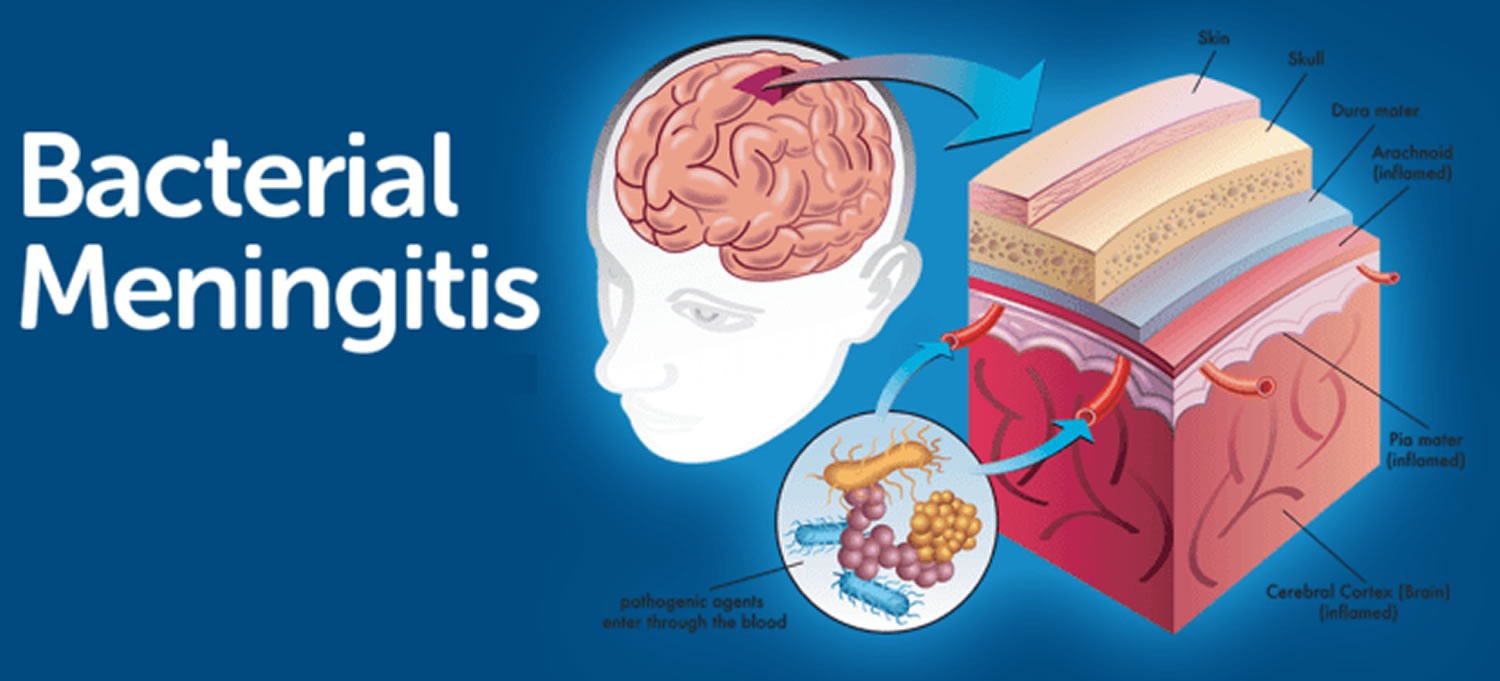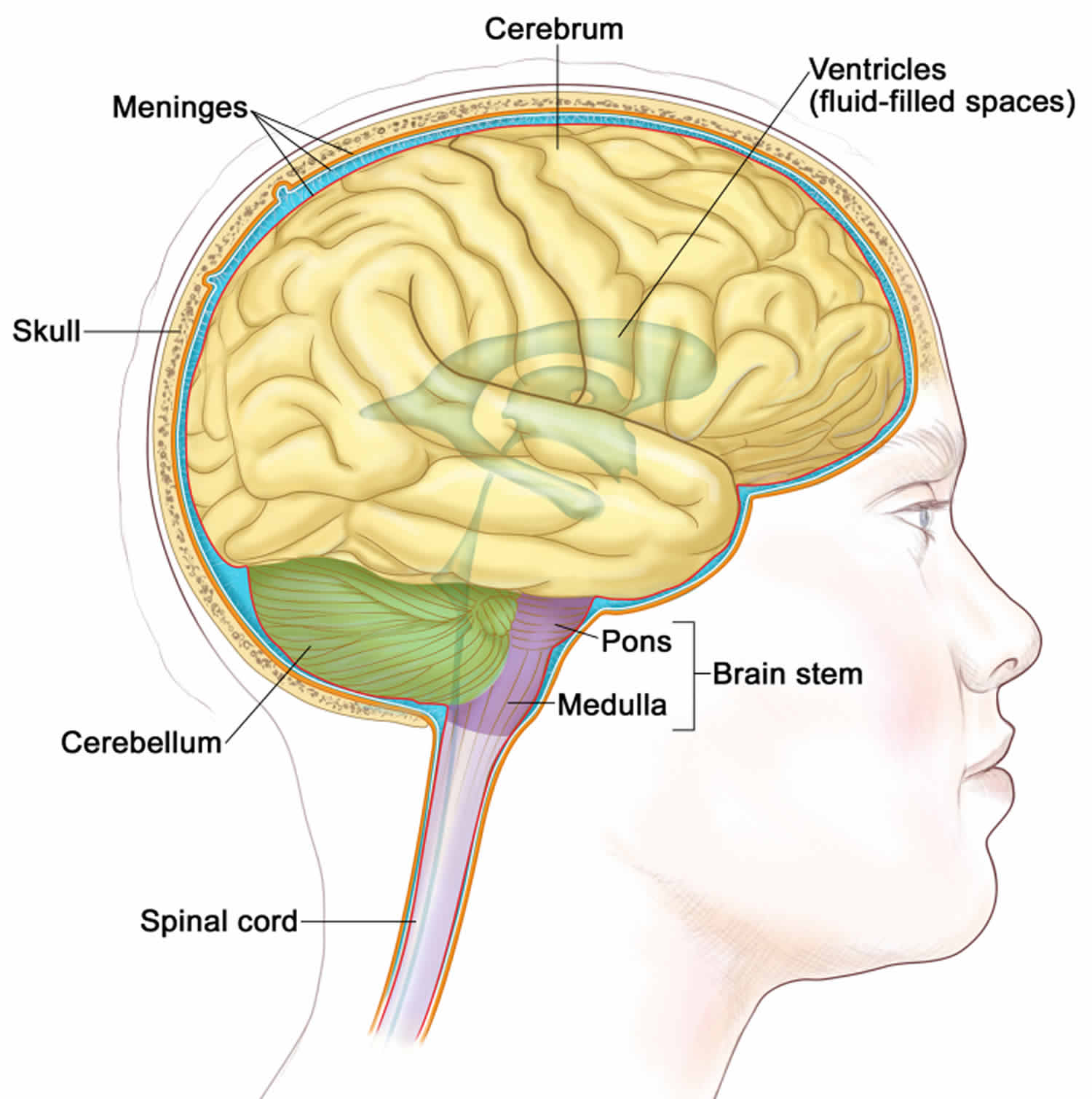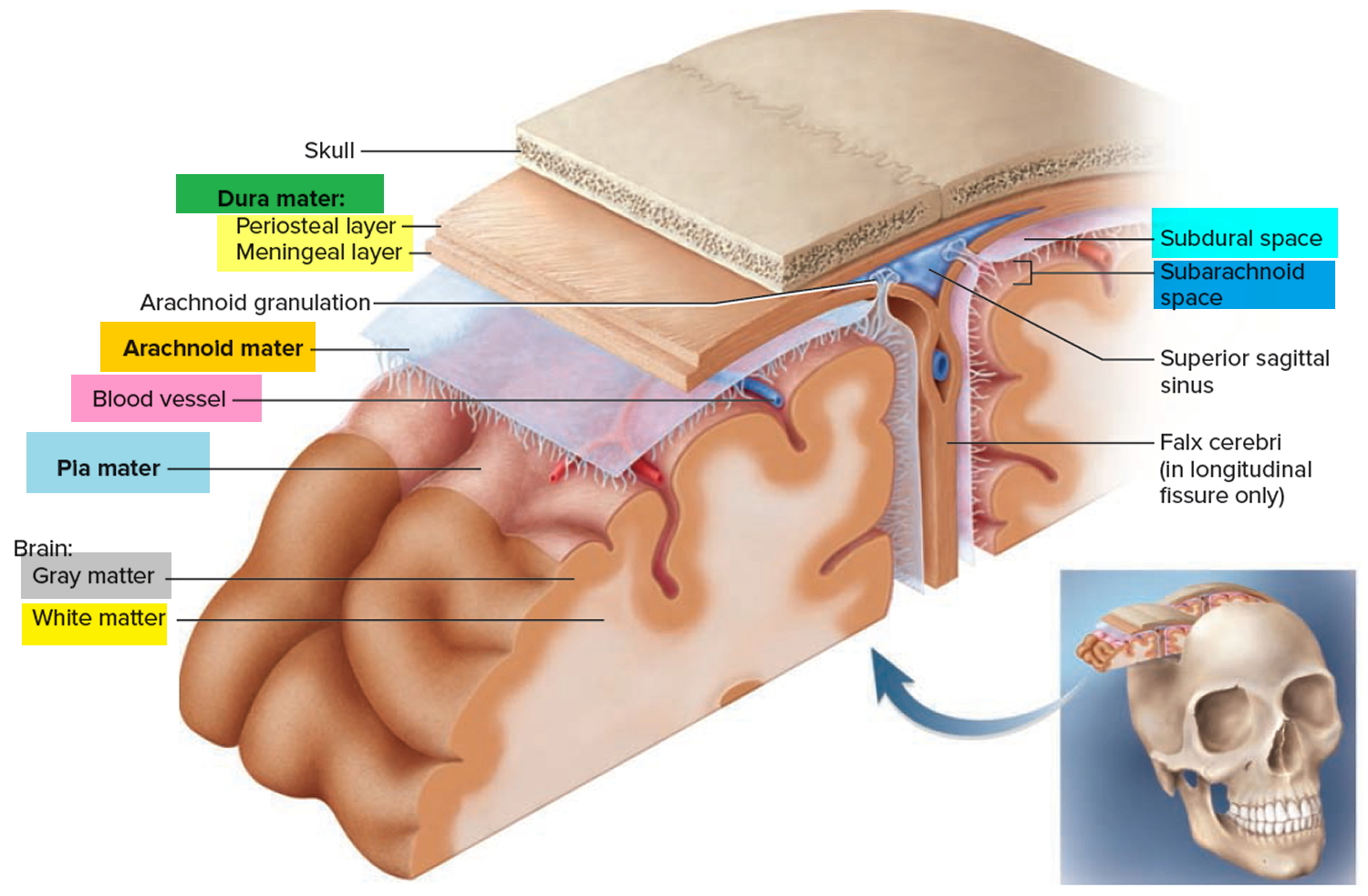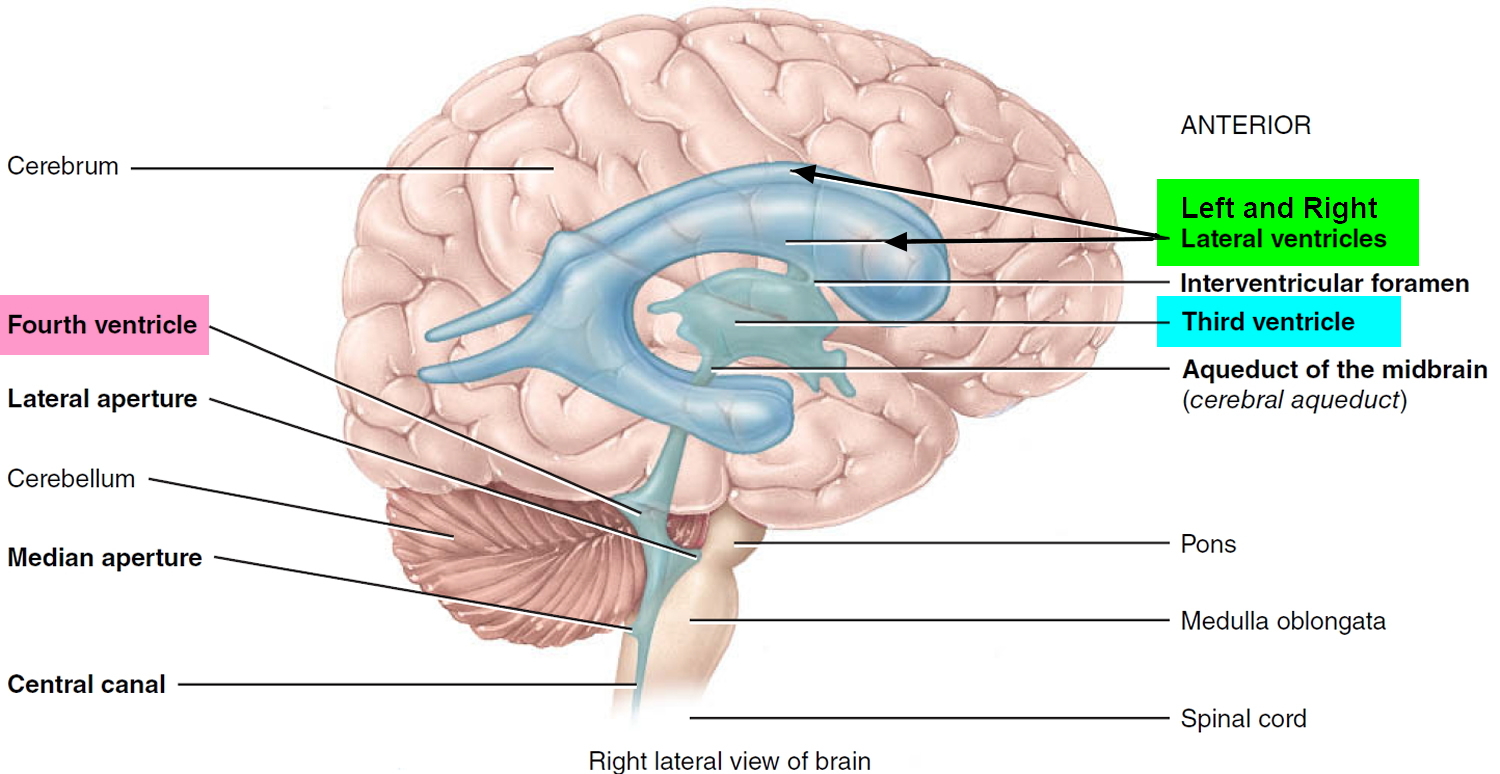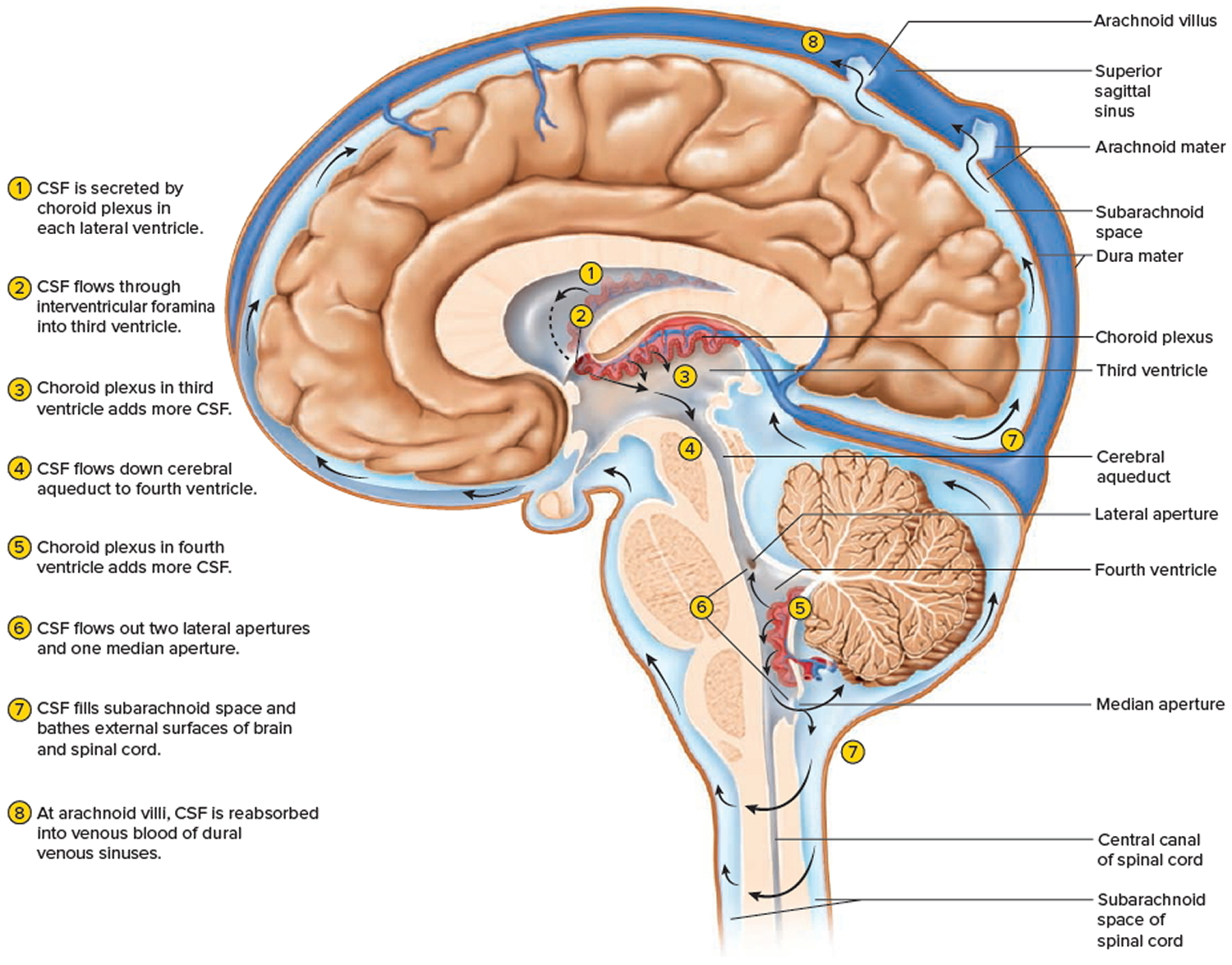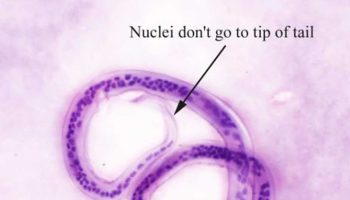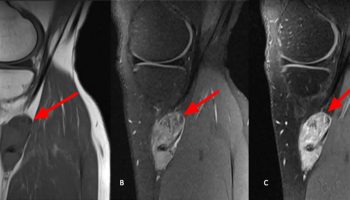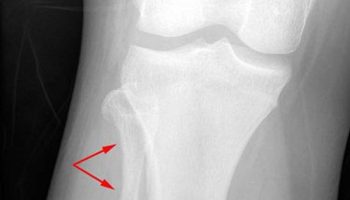Contents
What is bacterial meningitis
Bacterial meningitis is a bacterial infection of the protective membranes that surround the brain and spinal cord (meninges). Bacterial meningitis is an emergency. Bacterial meningitis is a rare but potentially fatal infection that can affect anyone, but is most common in babies, young children, teenagers and young adults. Bacterial meningitis can be very serious if not treated quickly. Death can occur in as little as a few hours. Fortunately, most people recover from meningitis. Bacterial meningitis can cause life-threatening blood poisoning (septicaemia) and result in permanent damage to the brain or nerves causing permanent disabilities such as brain damage, hearing loss, and learning disabilities. Early diagnosis and treatment of bacterial meningitis is essential to prevent permanent neurological damage.
Most people with bacterial meningitis who are treated quickly will also make a full recovery, although some are left with serious, long-term problems. These can include:
- hearing loss or vision loss, which may be partial or total
- problems with memory and concentration
- recurrent seizures (epilepsy)
- co-ordination, movement and balance problems
- loss of limbs – amputation of affected limbs is sometimes necessary
Overall, it’s estimated that up to 1 in every 10 cases of bacterial meningitis is fatal.
There are several types of bacteria that can cause meningitis. Leading causes in the United States include 1:
- Streptococcus pneumoniae
- Group B Streptococcus
- Neisseria meningitidis
- Haemophilus influenzae
- Listeria monocytogenes
On average, bacterial meningitis caused about 4,100 cases and 500 deaths in the United States each year between 2003 and 2007 2.
These bacteria can also be associated with another serious illness, sepsis. Sepsis is the body’s overwhelming and life-threatening response to infection that can cause tissue damage, organ failure, and death.
Bacterial meningitis can be caused by several types of bacteria that first cause an upper respiratory tract infection and then travel through the blood stream to the brain. Bacterial meningitis can also occur when certain bacteria invade the meninges directly. Bacterial meningitis can cause stroke, hearing loss, and permanent brain damage.
- Pneumococcal meningitis (Streptococcus pneumoniae) is the most common form of meningitis and is the most serious form of bacterial meningitis. Some 6,000 cases of pneumococcal meningitis are reported in the United States each year. The disease is caused by the bacterium Streptococcus pneumoniae, which also causes pneumonia, blood poisoning (septicemia), and ear and sinus infections. At particular risk are children under age 2 and adults with a weakened immune system. People who have had pneumococcal meningitis often suffer neurological damage ranging from deafness to severe brain damage. Immunizations are available for certain strains of the pneumococcal bacteria.
- Meningococcal meningitis is caused by the bacterium Neisseria meningitides. Each year in the United States about 2,600 people get this highly contagious disease. High-risk groups include infants under the age of 1 year, people with suppressed immune systems, travelers to foreign countries where the disease is endemic, and college students (freshmen in particular), military recruits, and others who reside in dormitories. Between 10 and 15 percent of cases are fatal, with another 10-15 percent causing brain damage and other serious side effects. If meningococcal meningitis is diagnosed, people in close contact with an infected individual should be given preventative antibiotics.
- Haemophilus influenzae meningitis was at one time the most common form of bacterial meningitis. Fortunately, the Haemophilus influenzae b vaccine has greatly reduced the number of cases in the United States. Those most at risk of getting this disease are children in child-care settings and children who do not have access to the vaccine.
- Listeria monocytogenes meningitis (listeria). These bacteria can be found in unpasteurized cheeses, unpasteurized dairy, hot dogs and luncheon meats. Pregnant women, newborns, older adults and people with weakened immune systems are most susceptible. Listeria can cross the placental barrier, and infections in late pregnancy may be fatal to the baby.
Other forms of bacterial meningitis include Escherichia coli meningitis, which is most common in elderly adults and newborns and may be transmitted to a baby through the birth canal; and Mycobacterium tuberculosis meningitis, a rare disease that occurs when the bacterium that causes tuberculosis attacks the meninges.
A number of vaccinations are available that offer some protection against meningitis.
- Bacterial meningitis is an emergency. Death can occur in as little as a few hours.
- You should get medical advice as soon as possible if you’re concerned that you or your child could have meningitis.
- Trust your instincts and don’t wait until a rash develops.
Call your local emergency services number for an ambulance or go to your nearest emergency department immediately if you think you or your child might be seriously ill.
Seek immediate medical care if you or someone in your family has meningitis symptoms, such as:
- Fever
- Severe, unrelenting headache
- Confusion
- Vomiting
- Stiff neck
Bacterial meningitis is serious, and can be fatal without prompt antibiotic treatment. Delayed treatment increases the risk of permanent brain damage or death.
It’s also important to talk to your doctor if a family member or someone you work with has meningitis. You may need to take medications to prevent getting the infection.
Main complications of meningitis
Without prompt treatment, meningitis may result in the following:
- Brain damage
- Buildup of fluid between the skull and brain (subdural effusion)
- Hearing loss
- Buildup of fluid inside the skull that leads to brain swelling (hydrocephalus)
- Seizures
- Death
Some of the most common complications associated with meningitis are:
- hearing loss, which may be partial or total – people who have had meningitis will usually have a hearing test after a few weeks to check for any problems
- recurrent seizures (epilepsy)
- problems with memory and concentration
- co-ordination, movement and balance problems
- learning difficulties and behavioral problems
- vision loss, which may be partial or total
- loss of limbs – amputation is sometimes necessary to stop the infection spreading through the body and remove damaged tissue
- bone and joint problems, such as arthritis
- kidney problems
Overall, it’s estimated up to 1 in every 10 cases of bacterial meningitis is fatal.
Treatment and support
Additional treatment and long-term support may be required if you or your child experience complications of meningitis.
For example:
- cochlear implants, which are small devices that are inserted into the ears to improve hearing, may be needed in cases of severe hearing loss
- prosthetic limbs and rehabilitation support may help if it was necessary to amputate any limbs – read more about recovering after an amputation
- counselling and psychological support may help if the trauma of having meningitis causes problems such as disturbed sleep, bedwetting, or fear of doctors and hospitals
Protective Coverings of the Brain
The brain is enveloped in three membranes called the meninges, which lie between the nervous tissue and bone. They protect the brain and provide a structural framework for its arteries and veins. As in the spinal cord, these are the dura mater, arachnoid mater, and pia mater. However, the cranial dura mater consists of two layers—an outer periosteal layer equivalent to the periosteum of the cranial bones, and an inner meningeal layer. Only the meningeal layer continues into the vertebral canal, where it forms the dural sheath around the spinal cord. The cranial dura mater is pressed closely against the cranial bone, with no intervening epidural space like the one around the spinal cord. It is not attached to the bone, however, except in limited places: around the foramen magnum, the sella turcica, the crista galli, and the sutures of the skull.
Meningitis is inflammation of the meninges that surrounds the brain and spinal cord. There are several types of meningitis. The most common is viral meningitis. You get it when a virus enters the body through the nose or mouth and travels to the brain. Bacterial meningitis is rare, but can be deadly. It usually starts with bacteria that cause a cold-like infection. It can cause stroke, hearing loss, and brain damage. It can also harm other organs. Pneumococcal infections and meningococcal infections are the most common causes of bacterial meningitis. Anyone can get meningitis, but it is more common in people with weak immune systems. Meningitis can get serious very quickly.
Figure 1. Meninges
Figure 15. Meninges of the brain
In some places, the two layers of dura are separated by dural sinuses, spaces that collect blood that has circulated through the brain. Two major, superficial ones are the superior sagittal sinus, found just under the cranium along the median line, and the transverse sinus, which runs horizontally from the rear of the head toward each ear. These sinuses meet like an inverted T at the back of the brain and ultimately empty into the internal jugular veins of the neck.
In certain places, the meningeal layer of the dura folds inward to separate major parts of the brain from each other and limit brain movements within the cranium, as when one receives a blow to the head. There are three of these: (1) the falx cerebri, which extends into the longitudinal fissure as a tough, crescent-shaped wall between the right and left cerebral hemispheres; (2) the tentorium cerebelli, which stretches like a roof over the posterior cranial fossa and separates the cerebellum from the overlying cerebrum; and (3) the falx cerebelli, a vertical partition between the right and left halves of the cerebellum on the inferior side.
The arachnoid mater and pia mater are similar to those of the spinal cord. The arachnoid mater is a transparent membrane over the brain surface, deep to the dura. A subarachnoid space separates it from the pia below, and in some places, a subdural space separates it from the dura above. The subarachnoid space contains the largest blood vessels of the cerebral surface. The pia mater is a very thin, delicate membrane, not usually visible without a microscope. Whereas the arachnoid meninx only overlies the sulci of the cerebral surface, the pia mater dips down into them and closely follows all the contours of the brain.
Ventricles and Cerebrospinal Fluid
The brain has four internal chambers called ventricles. The largest and most frontal ones are the two lateral ventricles, which form an arc in each cerebral hemisphere. Through a tiny pore called the interventricular foramen, each lateral ventricle is connected to the third ventricle, a narrow median space inferior to the corpus callosum. From here, a canal called the cerebral aqueduct passes down the core of the midbrain and leads to the fourth ventricle, a small triangular chamber between the pons and cerebellum. Caudally, this space narrows and forms a central canal that extends through the medulla oblongata into the spinal cord.
Figure 3. Ventricles of the brain
On the floor or wall of each ventricle is a spongy mass of blood capillaries called a choroid plexus, named for its histological resemblance to a fetal membrane called the chorion. Ependyma, a type of neuroglia that resembles a cuboidal epithelium, lines the ventricles and canals and covers the choroid plexuses. It produces cerebrospinal fluid (CSF).
Cerebrospinal fluid is a clear, colorless liquid that fills the ventricles and canals of the CNS and bathes its external surface. The brain produces about 500 mL of cerebrospinal fluid per day, but the fluid is constantly reabsorbed at the same rate and only 100 to 160 mL is normally present at one time. About 40% of it is formed in the subarachnoid space external to the brain, 30% by the general ependymal lining of the brain ventricles, and 30% by the choroid plexuses. Cerebrospinal fluid production begins with the filtration of blood plasma through the capillaries of the brain. Ependymal cells modify the filtrate as it passes through them, so the cerebrospinal fluid has more sodium chloride than blood plasma, but less potassium, calcium, and glucose and very little protein.
Cerebrospinal fluid serves three functions for the brain:
- Buoyancy. Because the brain and cerebrospinal fluid are similar in density, the brain neither sinks nor floats in the cerebrospinal fluid. It hangs from delicate specialized fibroblasts of the arachnoid meninx. A human brain removed from the body weighs about 1.5 kg, but when suspended in cerebrospinal fluid its effective weight is only about 50 g. This buoyancy allows the brain to attain considerable size without being impaired by its own weight. If the brain rested heavily on the floor of the cranium, the pressure would kill the nervous tissue.
- Protection. Cerebrospinal fluid also protects the brain from striking the cranium when the head is jolted. If the jolt is severe, however, the brain still may strike the inside of the cranium or suffer shearing injury from contact with the angular surfaces of the cranial floor. This is one of the common findings in head injuries (concussions) from contact sports like NFL, rugby and boxing.
- Chemical stability. Cerebrospinal fluid rinses metabolic wastes from the nervous tissue and regulates its chemical environment. Slight changes in cerebrospinal fluid composition can cause malfunctions of the nervous system. For example, a high glycine concentration disrupts the control of body temperature and blood pressure, and a high pH causes dizziness and fainting.
Cerebrospinal fluid continually flows through and around the brain and spinal cord, driven partly by its own pressure, partly by the beating of ependymal cilia, and partly by rhythmic pulsations of the brain produced by each heartbeat. The cerebrospinal fluid of the lateral ventricles flows through the interventricular foramina into the third ventricle, then down the cerebral aqueduct to the fourth ventricle. The third and fourth ventricles and their choroid plexuses add more cerebrospinal fluid along the way. A small amount of cerebrospinal fluid fills the central canal of the spinal cord, but ultimately, all of it escapes through three pores in the fourth ventricle—a median aperture and two lateral apertures. These lead into the subarachnoid space on the brain and spinal cord surface. From here, cerebrospinal fluid is reabsorbed by arachnoid granulations, extensions of the arachnoid meninx shaped like little sprigs of cauliflower, protruding through the dura mater into the superior sagittal sinus. Cerebrospinal fluid penetrates the walls of the granulations and mixes with blood in the sinus.
Figure 4. Cerebrospinal fluid formation, absorption and circulation around and within the brain
How is bacterial meningitis spread?
Generally, the germs that cause bacterial meningitis spread from one person to another. Certain germs, such as Listeria monocytogenes, can spread through food.
How people spread the germs often depends on the type of bacteria. It is also important to know that people can carry these bacteria in or on their bodies without being sick. These people are “carriers.” Most carriers never become sick, but can still spread the bacteria to others.
Here are some of the most common examples of how people spread each type of bacteria to each other:
- Mothers can pass group B Streptococcus and Escherichia coli to their babies during labor and birth.
- People spread Haemophilus influenzae type b (Hib) and Streptococcus pneumoniae by coughing or sneezing while in close contact with others, who breathe in the bacteria.
- People spread Neisseria meningitidis by sharing respiratory or throat secretions (saliva or spit). This typically occurs during close (coughing or kissing) or lengthy (living in the same household) contact.
- People can get Escherichia coli by eating food prepared by people who did not wash their hands well after using the toilet.
People usually get sick from Escherichia coli and Listeria monocytogenes by eating contaminated food.
Is bacterial meningitis contagious?
Yes. While bacterial meningitis is not as contagious as a cold or the flu, it can be passed on through contact with a sick person’s saliva or spit. For example, it can be passed from person to person through coughing or kissing. Individuals living close together, like students in a college dorm, are at increased risk for getting bacterial meningitis.
Viral meningitis vs Bacterial meningitis
Viral meningitis or aseptic meningitis is usually mild and often clears on its own. Most cases in the United States are caused by a group of viruses known as enteroviruses—common viruses that enter the body through the mouth and travel to the brain and surrounding tissues where they multiply. Enteroviruses are most common in late summer and early fall. Viral meningitis occurs more often than bacterial meningitis and is milder. Viral meningitis most often affects children and adults under age 30 3.
Enteroviruses are present in mucus, saliva, and feces, and can be transmitted through direct contact with an infected person or an infected object or surface. Other viruses that cause meningitis include varicella zoster (the virus that causes chicken pox and can appear decades later as shingles), influenza, mumps, HIV, and herpes simplex type 2 (genital herpes).
Many types of viruses can cause meningitis:
- Enteroviruses: These are viruses that also can cause intestinal illness.
- Herpes viruses: These are the same viruses that can cause cold sores and genital herpes. However, people with cold sores or genital herpes do not have a higher chance of developing herpes meningitis.
- Mumps and HIV viruses can cause aseptic meningitis.
- West Nile virus: This virus is spread by mosquito bites and has become a cause of viral meningitis in most of the United States.
Symptoms of viral meningitis may include:
- Headache
- Sensitivity to light (photophobia)
- Slight fever
- Fatigue
However, you cannot tell if you have bacterial or viral meningitis by how you feel. Your health care provider must find out the cause. Go to the hospital emergency department right away if you think you have symptoms of meningitis.
Bacterial meningitis signs and symptoms
Bacterial meningitis is an emergency. You will need immediate treatment in a hospital. Symptoms usually come on quickly, and may include:
- Fever and chills, especially in newborns and children
- Altered mental status (confusion)
- Nausea and vomiting
- Sensitivity to light (photophobia)
- Severe headache
- Stiff neck
Other symptoms that can occur with bacterial meningitis:
- Agitation
- Bulging fontanelles in babies
- Decreased alertness
- Poor feeding or irritability in children
- Rapid breathing
- Unusual posture, with the head and neck arched backward (opisthotonos)
In newborns and infants, the meningitis symptoms of fever, headache, and neck stiffness may be absent or difficult to notice. The baby may be irritable, vomit, feed poorly, or appear to be slow or inactive. In young babies, doctors may also look for a bulging fontanelle (soft spot on infant’s head) or abnormal reflexes. If you think your baby or child has any of these symptoms, call the doctor right away.
Symptoms of bacterial meningitis can appear quickly or over several days. Typically they develop within 3 to 7 days after exposure
Later symptoms of bacterial meningitis can be very serious (e.g., seizures, coma). For this reason, anyone who thinks they may have meningitis should see a doctor as soon as possible.
Bacterial meningitis causes
Common causes of bacterial meningitis vary by age group:
- Newborns: Group B Streptococcus, Streptococcus pneumoniae, Listeria monocytogenes, Escherichia coli
- Babies and children: Streptococcus pneumoniae, Neisseria meningitidis, Haemophilus influenzae type b (Hib), group B Streptococcus
- Teens and young adults: Neisseria meningitidis, Streptococcus pneumoniae
- Older adults: Streptococcus pneumoniae, Neisseria meningitidis, Haemophilus influenzae type b (Hib), group B Streptococcus, Listeria monocytogenes
Risk factors for getting bacterial meningitis
Certain people are at increased risk for bacterial meningitis. Some risk factors include:
- Age
- Babies are at increased risk for bacterial meningitis compared to people in other age groups. However, people of any age can develop bacterial meningitis.
- Community setting
- Infectious diseases tend to spread where large groups of people gather together. College campuses have reported outbreaks of meningococcal disease, caused by Neisseria meningitidis.
- Certain medical conditions
- There are certain medical conditions, medications, and surgical procedures that put people at increased risk for meningitis.
- Working with meningitis-causing pathogens
- Microbiologists routinely exposed to meningitis-causing bacteria are at increased risk for meningitis.
- Travel
- Travelers may be at increased risk for meningococcal disease, caused by Neisseria meningitidis, if they travel to certain places, such as:
- The meningitis belt in sub-Saharan Africa, particularly during the dry season
- Mecca during the annual Hajj and Umrah pilgrimage
- Travelers may be at increased risk for meningococcal disease, caused by Neisseria meningitidis, if they travel to certain places, such as:
Bacterial meningitis prevention
Common bacteria or viruses that can cause meningitis can spread through coughing, sneezing, kissing, or sharing eating utensils, a toothbrush or a cigarette.
These steps can help prevent meningitis:
- Wash your hands. Careful hand-washing helps prevent germs. Teach children to wash their hands often, especially before eating and after using the toilet, spending time in a crowded public place or petting animals. Show them how to vigorously and thoroughly wash and rinse their hands.
- Practice good hygiene. Don’t share drinks, foods, straws, eating utensils, lip balms or toothbrushes with anyone else. Teach children and teens to avoid sharing these items too.
- Stay healthy. Maintain your immune system by getting enough rest, exercising regularly, and eating a healthy diet with plenty of fresh fruits, vegetables and whole grains.
- Cover your mouth. When you need to cough or sneeze, be sure to cover your mouth and nose.
- If you’re pregnant, take care with food. Reduce your risk of listeriosis by cooking meat, including hot dogs and deli meat, to 165 °F (74 °C). Avoid cheeses made from unpasteurized milk. Choose cheeses that are clearly labeled as being made with pasteurized milk.
The most effective way to protect you and your child against certain types of bacterial meningitis is to get vaccinated. There are vaccines for three types of bacteria that can cause meningitis.
Bacterial meningitis vaccine
- Meningococcal (Neisseria meningitidis) conjugate vaccine. The meningococcal vaccine provides protection against the common types of bacterial meningitis. These vaccines are divided into two categories: the meningococcal conjugate vaccines or MCV4 for short (brand names include Menveo® and Menactra®) and meningococcal polysaccharide vaccine or MPSV4 for short (brand name: Menomune®). There is also Serogroup B meningococcal vaccines (brand names: Bexsero® and Trumenba®). The MCV4 vaccines protect against four types of meningococcal disease, giving high but not 100% protection. The vaccines are noninfectious and cannot give a person bacterial meningitis. The Centers for Disease Control and Prevention (CDC) recommends the MCV4 vaccine for individuals age 11-18. It is recommended that the first dose of this vaccine be given at the 11-12 year old checkup and then a booster dose at age 16. Other individuals may be recommended to get the vaccine based on their work, travel, or health conditions. Your health care provider will determine if you are a candidate for the serogroup B meningococcal vaccine, which is recommended for people 10 years or older who are at high risk. If the vaccine is first given between ages 13 and 15, the booster shot is recommended between ages 16 and 18. If the first shot is given at age 16 or older, no booster is necessary. This vaccine can also be given to younger children who are at high risk of bacterial meningitis or who have been exposed to someone with the disease. It’s approved for use in children as young as 9 months old. It’s also used to vaccinate healthy but previously unvaccinated people who have been exposed in outbreaks.
- Streptococcus pneumoniae
- Pneumococcal conjugate vaccine (PCV13). This vaccine also is part of the regular immunization schedule for children younger than 2 years in the United States. Additional doses are recommended for children between the ages of 2 and 5 who are at high risk of pneumococcal disease, including children who have chronic heart or lung disease or cancer.
- Pneumococcal polysaccharide vaccine (PPSV23). Older children and adults who need protection from pneumococcal bacteria may receive this vaccine. The Centers for Disease Control and Prevention recommends the PPSV vaccine for all adults older than 65, for younger adults and children age 2 and up who have weak immune systems or chronic illnesses such as heart disease, diabetes or sickle cell anemia, and for those who don’t have a spleen.
- Haemophilus influenzae type b (Hib) vaccine: Children in the United States routinely receive this vaccine as part of the recommended schedule of vaccines, starting at about 2 months of age. The vaccine is also recommended for some adults, including those who have sickle cell disease or AIDS and those who don’t have a spleen.
Make sure you and your child are vaccinated on schedule.
Like with any vaccine, the vaccines that protect against these bacteria are not 100% effective. The vaccines also do not protect against all the types (strains) of each bacteria. For these reasons, there is still a chance you can develop bacterial meningitis even if you were vaccinated.
Pregnant women should talk to their doctor or midwife about getting tested for group B Streptococcus. Women receive the test when they are 35 to 37 weeks pregnant. Doctors give antibiotics (during labor) to women who test positive in order to prevent passing group B Strep to their newborns.
Pregnant women can also reduce their risk of meningitis caused by Listeria monocytogenes. Women should avoid certain foods during pregnancy and safely prepare others.
If someone has bacterial meningitis, a doctor may recommend antibiotics to help prevent other people from getting sick. Doctors call this prophylaxis. The Centers for Disease Control and Prevention (CDC) recommends prophylaxis for 1:
- Close contacts of someone with meningitis caused by Neisseria meningitidis
- Family members, especially if they are at increased risk, of someone with a serious Haemophilus influenzae type b (Hib) infection
Your doctor or local health department will tell you if you or someone in your house needs prophylaxis.
You can also help protect yourself and others from bacterial meningitis by maintaining healthy habits:
- Don’t smoke and avoid cigarette smoke
- Get plenty of rest
- Avoid close contact with people who are sick
This is especially important for people at increased risk for disease, including:
- Young babies
- Older adults
- People with weak immune systems
- People without a spleen or a spleen that doesn’t work the way it should (functional asplenia)
Pregnant women can pass group B Streptococcus (group B strep) to their baby during labor and delivery. A newborn infected with group B strep can develop meningitis or other life-threatening infections soon after birth. Talk with your doctor or midwife about getting a group B test when you are 35 to 37 weeks pregnant. Doctors give antibiotics (during labor) to women who test positive in order to prevent infection in newborns.
Pregnant women are at increased risk of developing listeriosis, an infection caused by the bacteria Listeria monocytogenes. Pregnant women with listeriosis typically experience only fever and other flu-like symptoms, such as fatigue and aches. Infection during pregnancy can lead to miscarriage, stillbirth, premature delivery, or life-threatening infection of the newborn, including meningitis. Pregnant women can reduce their risk of meningitis caused by Listeria monocytogenes. You can reduce the risk that you and your baby will get meningitis caused by Listeria monocytogenes by avoiding certain foods and safely preparing others.
Soft cheeses made with unpasteurized milk (also called raw milk) are estimated to be 50 to 160 times more likely to cause Listeria infection than when they are made with pasteurized milk.
Although pasteurization of milk kills Listeria, products made from pasteurized milk can still become contaminated if they are produced in facilities with unsanitary conditions.
Recommendations for everyone:
- Make sure the label says, “Made with pasteurized milk.”
- Be aware that Hispanic-style cheeses made from pasteurized milk, such as queso fresco, have caused Listeria infections, most likely because they were contaminated during cheese-making.
Recommendations for people at higher risk, including pregnant women, older adults, and people with weakened immunity:
- Avoid eating soft cheese, such as queso fresco, queso blanco, panela (queso panela), brie, Camembert, blue-veined, or feta, unless it is labeled as made with pasteurized milk.
Raw milk is milk from any animal that has not been pasteurized to kill harmful bacteria. Raw milk (also called unpasteurized milk) can carry harmful bacteria, including Listeria, and other germs that can make you very sick or kill you. Although it is possible to get foodborne illness from many kinds of foods, raw milk is one of the riskiest of all.
Raw milk made into other products, such as soft cheese, ice cream, and yogurt, can also cause dangerous infections. When consuming these products, make sure they are made from pasteurized milk.
Recommendations for everyone, especially people at higher risk, including infants and young children, pregnant women, older adults, and people with weakened immunity:
- Only consume pasteurized milk and milk products, including soft cheese, ice cream, and yogurt. Look for the word “pasteurized” on the label. If in doubt, don’t buy it!
- Keep milk and milk products refrigerated at 40°F (4 °C) or colder.
Preventing the spread of infection
The risk of someone with meningitis spreading the infection to others is generally low. But if someone is thought to be at high risk of infection, they may be given a dose of antibiotics as a precautionary measure.
This may include anyone who has been in prolonged close contact with someone who developed meningitis, such as:
- people living in the same house
- pupils sharing a dormitory
- university students sharing a hall of residence
- a boyfriend or girlfriend
People who have only had brief contact with someone who developed meningitis won’t usually need to take antibiotics.
Bacterial meningitis diagnosis
If a doctor thinks you have meningitis, they will collect samples of blood or cerebrospinal fluid (fluid near the spinal cord). A laboratory will test the samples to see what is causing the infection. It is important to know the specific cause of meningitis so the doctors know how to treat it.
Your doctor will examine you. This may show:
- Fast heart rate
- Fever
- Mental status changes
- Stiff neck
Spinal tap (lumbar puncture). If your doctor thinks you have meningitis, a lumbar puncture (spinal tap) should be done to remove a sample of cerebrospinal fluid (CSF) for testing. In people with meningitis, the cerebrospinal fluid (CSF) often shows a low sugar (glucose) level along with an increased white blood cell count and increased protein.
Cerebrospinal fluid (CSF) analysis may also help your doctor identify which bacterium caused the meningitis. If your doctor suspects viral meningitis, he or she may order a DNA-based test known as a polymerase chain reaction (PCR) amplification or a test to check for antibodies against certain viruses to determine the specific cause and determine proper treatment.
Other tests that may be done include:
- Blood culture. Blood samples are placed in a special dish to see if it grows microorganisms, particularly bacteria. A sample may also be placed on a slide and stained (Gram’s stain), then studied under a microscope for bacteria.
- Chest x-ray
- CT scan of the head. Computerized tomography (CT) or magnetic resonance (MR) scans of the head may show swelling or inflammation. X-rays or CT scans of the chest or sinuses may also show infection in other areas that may be associated with meningitis.
Bacterial meningitis treatment
Doctors treat bacterial meningitis with a number of antibiotics. It is important to start treatment as soon as possible.
The treatment depends on the type of meningitis you or your child has.
Acute bacterial meningitis must be treated immediately with intravenous antibiotics and, more recently, corticosteroids. This helps to ensure recovery and reduce the risk of complications, such as brain swelling and seizures.
The antibiotic or combination of antibiotics depends on the type of bacteria causing the infection. Your doctor may recommend a broad-spectrum antibiotic until he or she can determine the exact cause of the meningitis.
Your doctor may drain any infected sinuses or mastoids — the bones behind the outer ear that connect to the middle ear.
- Bacterial Meningitis. https://www.cdc.gov/meningitis/bacterial.html[↩][↩]
- Thigpen MC, Whitney CG, Messonnier NE, Zell ER, Lynfield R, Hadler JL, et al. Emerging Infections Programs Network. Bacterial meningitis in the United States, 1998-2007. N Engl J Med. 2011;364:2016-25.[↩]
- Meningitis. https://medlineplus.gov/ency/article/000680.htm[↩]
